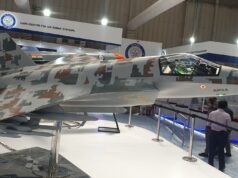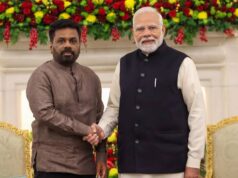The Night Raiders : Good Morning Peshawar ……Part Two
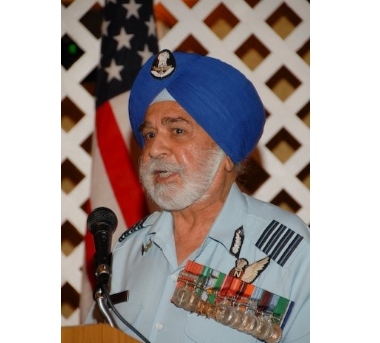
By
Gp Capt A S Ahluwalia
Source : Bharat Rakshak
What flight-levels are we flying outbound, inbound” asked Victor Two.
This brought me back to the present. I now placed the target outline plan on the black-board showing the Peshawar runway and, in relation to its center point, the specific targets.
“We will pre-set our bomb-sights according to the figures given in your flight plans in relation to the center point…… here,” I indicated the center point with a pointer, “and off-set it by the direction and distance of your specific target which will be as follows:
“Victor Eight will take the Control Tower which is at right angles to the right approximately 1000 yards from the center.”
I was now allocating the specific targets to the crews and watched them noting as I kept on indicating their locations on the chart before me.
“The fuel-dump near the southern end of the airstrip is for Victor Seven; the bomb-dump directly 1000 yards on the opposite side of the runway from the flying control will be hit by Victor Six; the Officers Mess….here….will be taken up by Victors Four and Five; and the PAF HQs…here….for Victors Two, Three, and self……”.
“Are the targets clear?” There was a general nod of approval all round.
“The tactics being used do not guarantee absolute accuracy. Your endeavor should be to hit the targets and areas given to you. Those carrying 4000-pounders have a fuse set for above ground level explosion at 100 feet. So, even hitting in the general area is likely to cause immense damage to life and property.” This concession came as a relief to most.
“With fuel limitations there is little leeway for deceptive routing but let them think we are going for Sargodha or Mianwali once again.”
“After take-off, turn right, heading 302 degrees; height 500 feet above ground level, I repeat, 500 feet.” I had now started explaining the route and heights and the pattern of attack as had been planned at Op HQ. When they were about to take notes I had interrupted them and told them that all these details were on the flight plan given to each of them with the timings and turning points and that the fuel graph had also been drawn on the flight plan.
I continued with a pointer on the map to assist me indicate the various positions:
“When “Alpha” is left astern, and before crossing the border, drop down to 100 feet, I repeat, 100 feet—no higher, come what may. From now on keep a good look out for high-tension wires. We will enter enemy territory at a point….here….on our way to Wazirabad. At Wazirabad alter course to 265 and head for Khushab, northeast of Sargodha…here; at Khushab alter heading 356 and hit this….here….bend of River Indus west of Cambellpore. From now on, strict continuous “contact” flying up to target. Follow the river in the East-West direction and fly on heading of 270 until you hit the Kohat-Peshawar road going North-South; from here follow the road North and increase to max speed. You will hit smack on the southern dumbbell of the 18-36 runway of Peshawar. Around the time when Victor One will hit the road, we should all be able to monitor Tango-India’s instructions about the location of the two pink and green TI bombs in relation to the center point of the airfield. If necessary, offset your bomb-sights again to allow for that error and aim for the TI bombs. Tango-India’s RT call will be the first silence break.”
Letting the information sink in, I paused and then asked, “Are there any questions or doubts on the routing?” None! So far, so good!
Then I commenced the attack pattern.
“One minute before TOT, a steep pull up to 4,000 feet and level. Weather is going to be clear; the moon will be at its best angle to enable us to see everything clearly. Visually, aim at the TI bombs and hope that your babies hit the correct spot. You will get only one single pass; so, make the best of it. Whether your aim is as accurate, as you may desire it to be or not, you have no choice—just drop your bombs, you don’t have the second round luxury—and that is an order….Having become 8,000 pounds lighter, the Canberra will become more maneuverable.”
“The next step………get out like hell………and do not forget the drill. After ‘bombs gone’, close bomb doors; heading 075 degrees, towards Muzaffarabad and keep climbing to 40,000 feet. From Muzaffarabad, head 110 to “Sierra”. Over “Sierra” turn right and head for “Charlie” over the Banihal Pass. If everything goes according to plan, and we hope and pray it does, each one of us should be over “Charlie” with enough fuel for 10 minutes—you have to land at one go, no second round. Any questions?”
“What if we have an emergency on return, or “Charlie” cannot accept us? Can we land at “Sierra”?” This was Victor Three. An excellent question, which had been missed by me!
“Good question. “Sierra” is out. They will be off the air and no one is being told of our being in that area. However, “Alpha,” as always, for all night bomber operations, will be keeping a watch and awaiting any emergency calls and they will have the electric flare paths ready for you in no time if you decide to land there. As for “Charlie” not accepting you, the only alternative is “Able.” They will be ready at all times for our return as the standby airfield. If for any reason you find that you cannot make any of these airfields either because of fuel shortage or any other emergency—bail out. Any more questions?”
Silence!!
“If there are no more questions let’s set our watches with mine.” On my signal, everyone set his watch to a “zero” time. The hands of the watch had crossed a day—it was September 14; the ill-omen, if any, of the 13th had gone. “Now let us proceed to our aircraft; remember do not speak of the target until inside your aircraft……..Good Luck, God Bless and Happy Landings.”
From then on each crew was on his own.
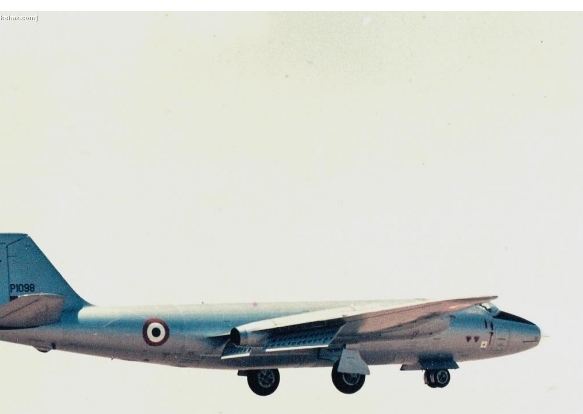
The Launch
“Tango-India” gave his signal for rolling. Victor One, that was we, started up and rolled to the take-off point in line with the right wing-tip of crashed “Tenth”.
“Thirty seconds to roll”, concentrating on my watch, I called out to the pilot, ‘Boss’ Varma, on the inter-com; and, sitting on the brakes, he pushed the throttles forward till the two engines were roaring like thunder, breaking the eerie silence with its rumbling in the quite dark night for miles, and the aircraft shuddered and quivered to go; I continued, “twenty, ten, 9, 8, 7, 6, 5, 4, 3, 2, 1…now.”
On the dot, at 0020 hours the pilot released the brakes and the aircraft tore through the darkness gobbling yards of the runway in its path, with the pilot watching and calling up the speed as the speedometer indicator inched forward.
As it came to the “unstick” speed, he gently pulled back on the stick, and steadily the nose wheel rose and then the aircraft lifted itself off the ground. In seconds we were at 500′ and level. We were now the masters of the silent sky looking forward to a successful end of the mission to be endorsed in the authorization book “DCO” [Duty Carried Out]. Both of us were now quietly absorbed in a mental rehearsal of what was ahead and so thoroughly planned. But not forgetting that, in heat of battle, the most well-planned, well-prepared and well-rehearsed plans do go awry.
“We are crossing abeam Alpha,” I informed the pilot, “drop down to one hundred feet. Recheck radio altimeter.” Slowly, he eased the aircraft down the 400′ glide.
“We should be crossing the border about now,” I said a little later.
Requesting the pilot to meticulously maintain speed, direction and height, I concentrated on ‘contact’ flying. It is a wonder for those not used to this type of flying as to how one can see the rail roads (the shiny metal lines), rivers, canals, roads, and high tension electric poles and lines. But here is where the starlight and moonlight are the greatest aids to a night interdictor crew and we make full use of them. After all, since 1957 we were being trained for such an occasion which came in 1965, and may not have come at all!! As I saw the Pakistan territory passing under us and awaited the various check and turning points, my mind again went back to the day’s happenings.
* * * * * * * * * * * *
Having got one hour for my planning, both the pilot and myself started working on the various graphs and charts on the aircraft performance, the maximum distance, with every ounce of gasoline that we could cover with the loads. After starting with a low-low [going to and from target at low level] profile, even if done straight out and back from the nearest airfield available along the border, we attempted various other profiles—low-medium; low-high—taking off from different bases. Subsequently, with very little diversionary routing, to confuse the enemy visual reporters on the ground or their radar, if any, on the route, we chose the profile of low-high by using “Charlie” as launching base—flying as low as possible to the target, and as high as possible back.
“Are you blokes ready”, was the call of Bops.
“Yes, Sir”, answered the pilot, as I collected my papers together. Bops rushed off to inform the CAS and AOC-in-C, and shortly all had reassembled. I have never had such experience before, where, discarding a plan prepared by the high-ups, I would have to “sell” our plan to them! But then, I was also confident that our plan was viable, pragmatic and born out of actual experience, if not in the battlefield, at least, under similarly simulated conditions in the hills and mountains.
“Sir”, I started, facing the AOC-in-C and the CAS, “we plan that instead of our parent base, we will launch our attack from ‘Charlie’. We will take-off past midnight, fly 500′ up to the Pakistan border, and thereafter at 100′, pulling up to 4,000′, for our bombing run over target. This height is based on the intelligence reports given by the CIO that the anti-aircraft guns at the target cannot hit at that height.
After a single pass, we leave the target area climbing to 40,000′ and return to ‘Charlie’ via “Sierra”. From information available, we are confident that Pak radar will not be able to detect us until we reach the target.”
Without giving a break for questions, I launched into the routing of the flight, and ended on a triumphant note saying: “We feel that this will be the biggest surprise to the enemy and a success to us.”
“With how much fuel will you make back to “Charlie”?” that was the Bops, not to be left out.
“Ten minutes, if we descend to landing height and more if we continue to remain at 40,000′ over “Charlie”, in case of any emergency,” said I.
“Isn’t it cutting very fine?” he continued.
“Yes, it is marginal, but it is better being with it near home, then to be shot out of the sky by the Pak Starfighters under the earlier plan….Sir,” I retorted back, and could sense the suppressed smiles of the ‘brass’. I knew then that our plan was sold.
Ahlu, we are approaching the Indus River bend,” came the soft and mellow voice of the pilot over the intercom. “I can see the reflection of the moonlight in the water,” he continued. He had been flying the courses, speeds and height and turning according to the times, noted on his knee pad during briefing, and just
mumbling those figures to me to ensure double check. I was sure that he was also, while flying, deep in his other thoughts. I went into the glass covered nose, where I was going to be from now on until the bombing run was over. Craning my neck, I could see the clear reflection in the water and, as per our briefing, the pilot automatically started following the river. I rechecked the bombsight and its settings for my target.
“Tango-India to Victor Force….TIs directly overshot 500 yards from center, repeat, 5-0-0 yards overshoot. Out.” That was good considering that the TIs job is the most difficult because he has nothing to go by, and in the light of the flares, which he drops himself, he has to aim for the center point, before the flares go out, and drop the TI bombs.
“That’s the Kohat-Peshawar Road which we just crossed. Just did not see it coming up,” I told the pilot, who had also simultaneously observed what had happened, because of the interruption from Tango-India, and went into a tight turn to the right to follow that road northwards to our target and increasing to max speed simultaneously. I quickly adjusted the bombsight to offset for the error of the TIs.
“Coming to one minute to TOT, standby to pull up…..…….NOW.”
The crisp instructions from me, who was timing now, and the steep pull up to 4,000′ pushed me down in the prone seat with the force of gravity. Before we leveled out, I could see the TI bombs and started “homing” on to them through my bombsight. As I commenced my bombing run commentary, my pilot had to remain quiet and only keep doing what was being instructed…. “4000 feet….Straight and level….left-left…left-left….steady, steady, steady…. right….right…steady… bomb doors open.” [Between the crew, repeated practice, brings them to a level when the pitch, the quickness, the speed, and the loudness of the voice giving the directions, indicates the urgency and the requirement desired.]
I could feel the bomb doors opening from the shudder and judder due to the added amount of ‘drag’, and knowing that the pilot has the toughest time in maintaining his speed and direction at this stage, but he must, because it is the most crucial phase of the whole operation.
Knowing he would do his best, I continued my bombing run commentary: “Steady…..steady….steady…steady….steady, steady, steady, steady”.
I was now holding my breath as the TI bombs were coming into the cross (+) of the bomb sight and my ‘steady’ was becoming quicker like my heart beats. As the cross and the TIs came together, I pressed the bomb release button and shouted, “Bombs gone…..bomb doors closed….climb to flight level 400 [40,000’], course 075.”
I was looking out to see the exploding bombs, which, as per the principle of bombing, would explode when the bombing aircraft is right over the target. On seeing them explode where I had expected them to, I was happy that the attack had really gone home. As I was watching and giving instructions, the anti-aircraft from the ground opened up sending ‘tracers’ way past above us. We realized that the intelligence information was faulty and these guns could reach up to 7,000′.
To ensure safety of the aircraft and the mission, the pilot immediately broke RT silence: “Victor One to Victor Force, Victor One to Victor Force…bombing run height changed to 8,000′, repeat, 8,000’…all pull up to that height to avoid ack-ack. Out.”
It had taken more than four minutes for the anti-aircraft guns to get going in spite of the fact that Tango India had spent about that much time circling over target, dropping bright flares and then doing the run for the TI bombs, and then came us. It gave us great satisfaction that the surprise that we had planned for and were anticipating had been achieved.
Victor Force could now ‘home’ on to the anti-aircraft tracers to reach the target!! After about ten minutes, when we were nearing “Sierra,” the pilot again broke RT silence: “Victor One to Victor Force…Check. Over.”
“Victor 2, OK”. This was followed by all the others.
What a relief. All safe and well on their way back home! From “Sierra” we headed towards “Charlie”.
As we crossed the foothills and were entering the plains there was a frantic RT call: “Victor Leader this is Victor Seven…I am apparently being pursued by a Starfighter near Banihal…Appears to have fired a missile…taking evasive action…descending. Over.”
“Victor Seven this is Victor One…Roger…Try to keep down into the hills…and watch your fuel. He should not be able to stay long so far from home. Over!”
“Roger…Victor Seven”. After some tense seconds, came again: “Victor Seven to Victor Leader….I think he is gone. Did not have to go down much! Climbing back to height! Over”!
“Roger, Victor Seven. Keep check on fuel. Out”!
It appears that a lone Starfighter, taking a chance so far from home, was able to sight one of us, made a pass, but due to the mountainous terrain, could not succeed to lock on. Luck favours the brave.
Peacefully heading for base after a successful operation is a feeling which cannot be expressed in words. Your mind is overloaded with thoughts—thoughts of your dear ones back home; thoughts that you have not had rest for so long; thoughts of what all could have happened to you; thoughts of what must be happening on the ground to the people on whom you unloaded your bombs; thoughts of how much damage would have been caused; how many would have been killed; how many wounded; what chaos would have followed such a raid; thoughts why such wars; why cannot the whole world live in peace and forsake weapons; thoughts what would happen to our dear ones if similar raid was to take place over us; and so on and so forth the mind went. Then again the mind focused on the mornings happening to tie up with what actually happened over the target.
* * * * * * * * * * * *
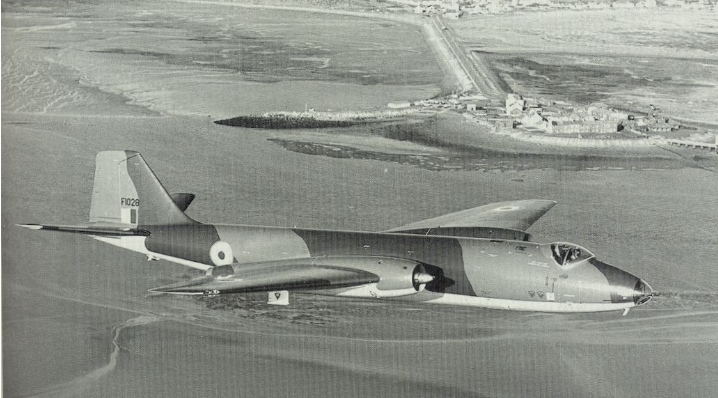
Having succeeded in ‘selling’ our plan, followed the arguments on the number of aircraft, the bomb loads, the airfields to standby for any emergencies, and many other aspects of an important mission, with emphasis on “Top Secret” being repeated by everyone around. To the four suggested in the first plan, we suggested sixteen, which was shot down by the AOC-in-C outright, because it meant putting the whole squadron into the air against one target.
We agreed, and reduced to twelve. Even that was not acceptable. They came to eight. It was like bargaining; but what for? None of us probably knew.
Eventually, it was agreed that there will be eight bombers, one target indicator marker and one standby bomber up to “Charlie”.
We suggested each carries two 4,000-pounder bombs with fuses to detonate at 100′ above ground level. We were shot down. Reason—Overkill. It was a quick decision thereafter: four with eight 1,000-pounders each, and four with two 4,000-pounders each, and the standby with eight 1,000-pounders.
“Well, Gentlemen, it has been a good effort, well-planned, well projected, and we are confident that success should be on our side. I wish to re-emphasize that with all the planning we can go haywire, and it can be a catastrophe, if secrecy is in any way compromised. No one, outside this room is aware of the target.
Let it be so until you two,” pointing at me and the pilot, “are ready to actually launch from “Charlie”. Strict RT silence will be maintained until over target—come what may. Bops will inform and tie up with AOC “Charlie” for keeping the airfield on standby without lights from 2000 to 0400 hours tonight and keep a listening watch in the ATC at all times.
Other than being informed of the landing time of the Canberras at “Charlie” and about the radio silence, no other information need be given. He should have all his refueling bowsers filled up and ready on the tarmac. Bops will also inform “Alpha” to keep a dusk to dawn watch for any of our aircraft in emergency.
“Sierra” will not be available. “Able” should standby for the Canberras return in case need be. Good luck, may God Bless you all and Happy landings. Jai Hind!” That was the AOC-in-C’s concluding talk.
I was wondering in admiration, that we worry so much planning one operation; what about him who has to see all the operations through day and night throughout the war, of which we did not know where was the end yet, and accept both success and defeat as it comes, with bouquets and brickbats from the top—both service and civil.
* * * * * * * * * * * *
The end of the thoughts of the morning briefing brought me out of my reverie as the pilot asked me how far we were from “Charlie”. Knowing that Pakistan radar must have been tracking us on our return to find out the base from which we had launched the attack on Peshawar, the possibility of a counter attack by PAF ground attack fighters on “Charlie” at “first light” could not be ruled out, so we had decided to immediately refuel and take off for home base as soon as possible.
Two hours and twenty five minutes after the launch from “Charlie” we landed back at that base—0245 hours September 14th, 1965. A quick refueling stop, a most refreshing mug of over-sweetened tea at the tarmac, kind courtesy the BC, and at 0330 hours we were off to our home base where we landed at 0430 hours, when most people, our own families, were snoring away, oblivious of the fact that there must be thousands of their kind already grieving in Peshawar.
It was 32 hours since I came home—the family was unaware where I was, because in those 32 hours I had been to Kanpur, Delhi, Agra, “Charlie”, Peshawar and back to “Charlie” and home. After a quick shower, while I was still moving, I realized that the wakefulness, the fatigue, and above all, the fear of the unknown—all take their toll in some form or the other…..Before I could eat even a few bites of my breakfast, I hit the pillow and was snoring.
Success also has its toll—the second Peshawar raid took place on September 16, 1965, a day after the first, and off I was again to Peshawar, but this time as Tango-India, with the CO of No. 5 Squadron, Wing Commander P.P. Singh. These were the only two raids against Peshawar, and I had the privilege of being on both—once leading the bomber force, and the second time to mark the target for the bomber force to come.
It was said that a surprise raid at low level even by Canberras to Peshawar was impossible but then how can one forget the words by someone, I do not recollect, saying: “Only he who can see the invisible can do the impossible.”
Excerpted from Airborne to Chairborne : Memoirs of a War Veteran – Aviator – Lawyer of the Indian Air Force (XLibris 2012)
Gp Capt Ahluwalia was mentioned in dispatches for his participation in the war. He is currently settled in California, USA.


